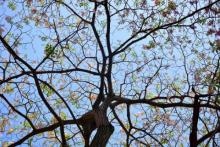Your Guide to Summer Flowers: Nasturtiums
The nasturtium is a member of the mustard family known as Brassicaceae, which contains five species. It is native to South America and brought to Europe by the Spanish conquistadors at the end of the 15th century. By the 17th century, Dutch and Spanish herbalists began developing another species and shared the seeds with British and other European botanists.

